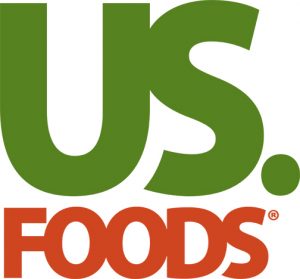As an increasing number of states and cities begin loosening government-imposed lockdowns, US Foods Holding Corp. has launched it latest Covid-19 online operator resource, the Restaurant Reopening Blueprint. It provides operators with a how-to for putting key Covid-19 guidelines into practice as they plan reopening efforts.
The Restaurant Reopening Blueprint is informed by interviews with key stakeholders such as diners, restaurant staff and US Foods consultants and chefs. Interviews were also conducted with operators and diners in China, where the novel coronavirus pandemic originated, to understand what experiences there might be applicable for restaurant operations in the United States.
The guide provides recommendations for approaching regulatory requirements, principles for planning an effective reopening, best practices for approaching front-of-house and back-of-house operations, and specific solutions for other foodservice formats such as cafeterias, quick-service restaurants, fast-casual restaurants, food courts, and bars and lounges.
“Preparing to reopen a restaurant in the face of a changing pandemic can be complex and challenging without the right resources to help guide your planning efforts,” said Jim Osborne, senior vice president of customer strategy and innovation at Rosemont, Illinois-headquartered US Foods. “We believe the Restaurant Reopening Blueprint is an invaluable resource for helping operators make sense of the new business practices and applying them in a way that will enhance diner confidence and support the successful ramp-up of their reopening efforts.”

Principles for an Effective Reopening
Clear principles should inform focus and scope as an operator starts their planning process. The guide provides the following key principles for an effective reopening.
- Demonstrating the importance placed on the health and well being of employees and customers.
- Staying nimble given the fluid environment.
- Adapting with a tighter, more focused menu to allow kitchens to better plan labor and prep needs and manage enhanced sanitation routines.
- Embracing preparation and safety protocols as part of your restaurant’s story.
- Maintaining a distinct separation between front-of-house and back-of-house.
- Creating a buffered, contactless front-of-house.
- Seeking opportunities to create new, lasting rituals to signal safety, to claim new spaces and to innovate.
- Creating clear and consistent communications with employees and customers to boost efficiency, morale and consumer sentiment.
Best practices for Approaching Front-of-House and Back-of-House Operations
The guide encourages operators to view their establishment as distinct zones to drive diner comfort and safety at various steps of the dining out journey and provides helpful solutions for approaching each zone.
- Pre-arrival/Arrival – Use online tools to help diners plan their visit; provide clear separation between entry, waiting and dining areas; maintain six feet between parties; and segment dine-in and takeout traffic to minimize congestion at narrow doorways.
- Entry/Exit – Change the entry path and establish six-foot distances; place entry signs where diners pause; and ensure entering and exiting diners do not cross paths at doorways.
- Dining Room/Bar – Keep diners physically separated by no less than six feet; clearly indicate which tables are “open” and “closed;” close off bar and counter seating; block diner access to high staff-flow areas; and differentiate wait staff and cleaning staff by specific colors of face masks and gloves. Creating new dining-room rituals, from the removal of all communal items on the table to disposable menus and touchless payment solutions.
- Restrooms – Visits to the restroom should be as contact-free as possible. Door kicks, foot handles, touchless faucets and soap dispensers, easy access trashcans, and disposable paper towels instill confidence. Operators should also consider posting a cleaning log in an easily visible spot.
Rethinking Roles and Responsibilities
By further distinguishing roles and responsibilities between the front-of-house and back-of-house, restaurant operators can uphold reopening principles of a contactless customer space and a sealed food-preparation space. Recommendations include:
- Front-of-house customer-engagement roles such as floor manager, host, server and service-facing bartender may only greet guests, educate on protocol and menu, maintain restrooms and process payment.
- Front-of-house restaurant safety roles such as food runners, busser, waiter and drink-making bartender may coordinate only with back-of-house lead to transport food to the table, clear plates, box food, refill water, retrieve drinks from bartender and reset tables.
- Back-of-house roles including chef, sous chef, lead line cook, line cook, prep, cooks, pastry chef, pastry cooks and dishwasher may only receive safely delivered food, perform inventory and ordering, cook food, wash dishes and clean and sanitize kitchen.
Learn More
The Restaurant Reopening Blueprint and accompanying webinars are available on the company’s “Make it Now” online platform, designed to provide operators resources and solutions to help them adapt to changing industry needs. View all of the available resources or schedule a one-on-one consultation with a US Foods Restaurant Operations Consultant or Food Fanatic Chef, here.
US Foods is the second largest foodservice distributor in North America, partnering with approximately 300,000 restaurants and foodservice operators. With more than 70 broadline locations and 76 cash and carry stores, it provides customers with a broad and innovative food offering and a comprehensive suite of e-commerce, technology and business solutions.






